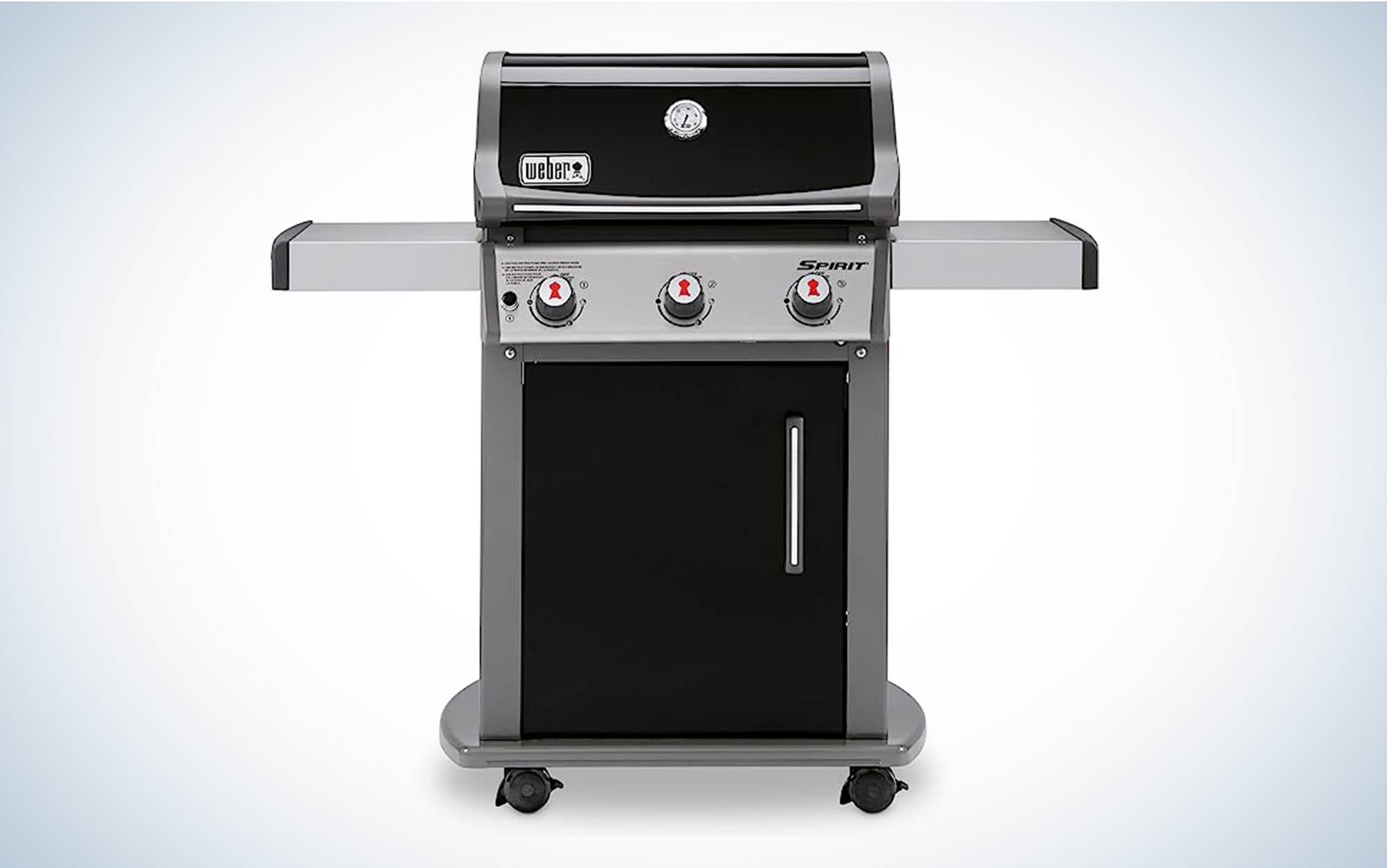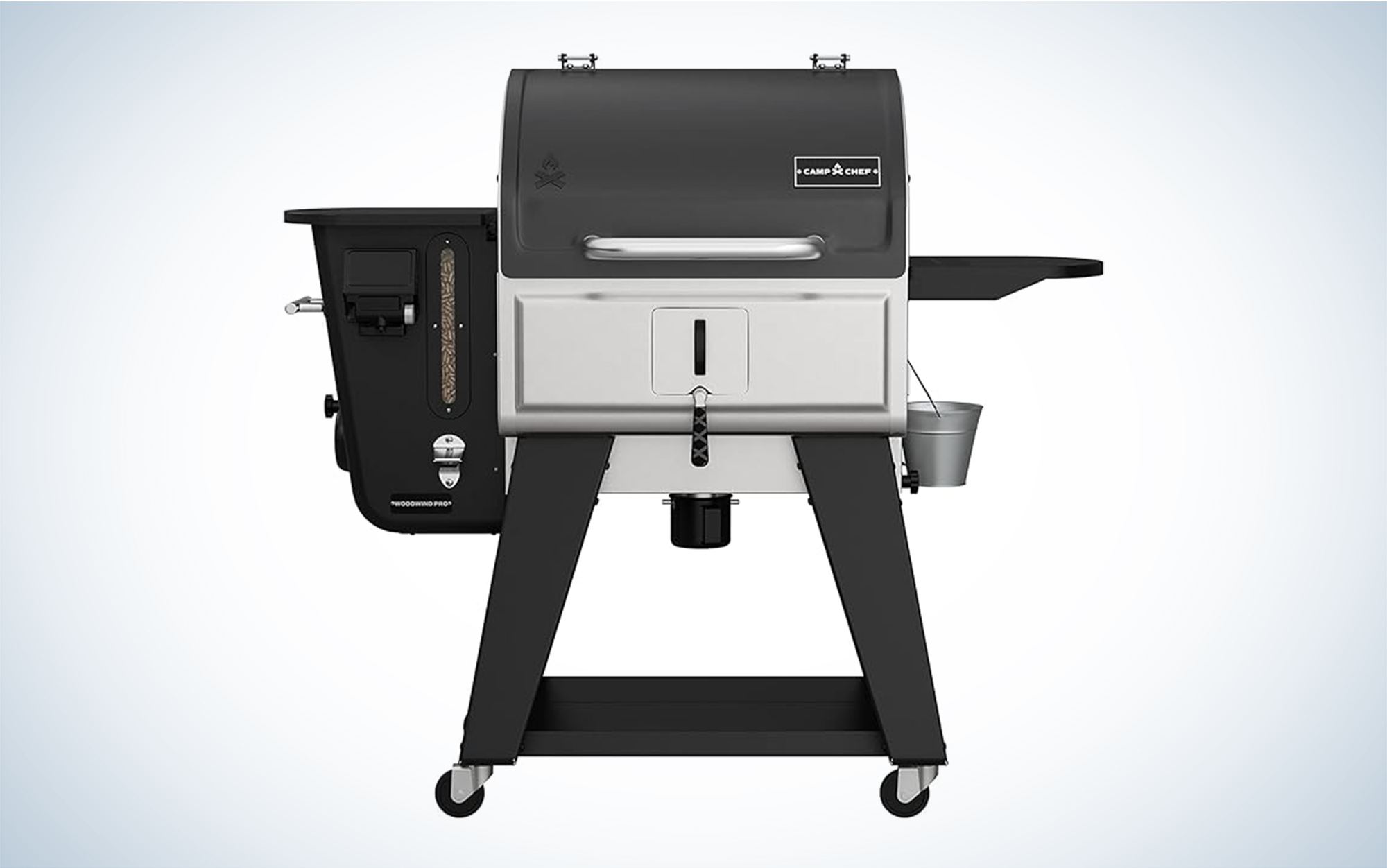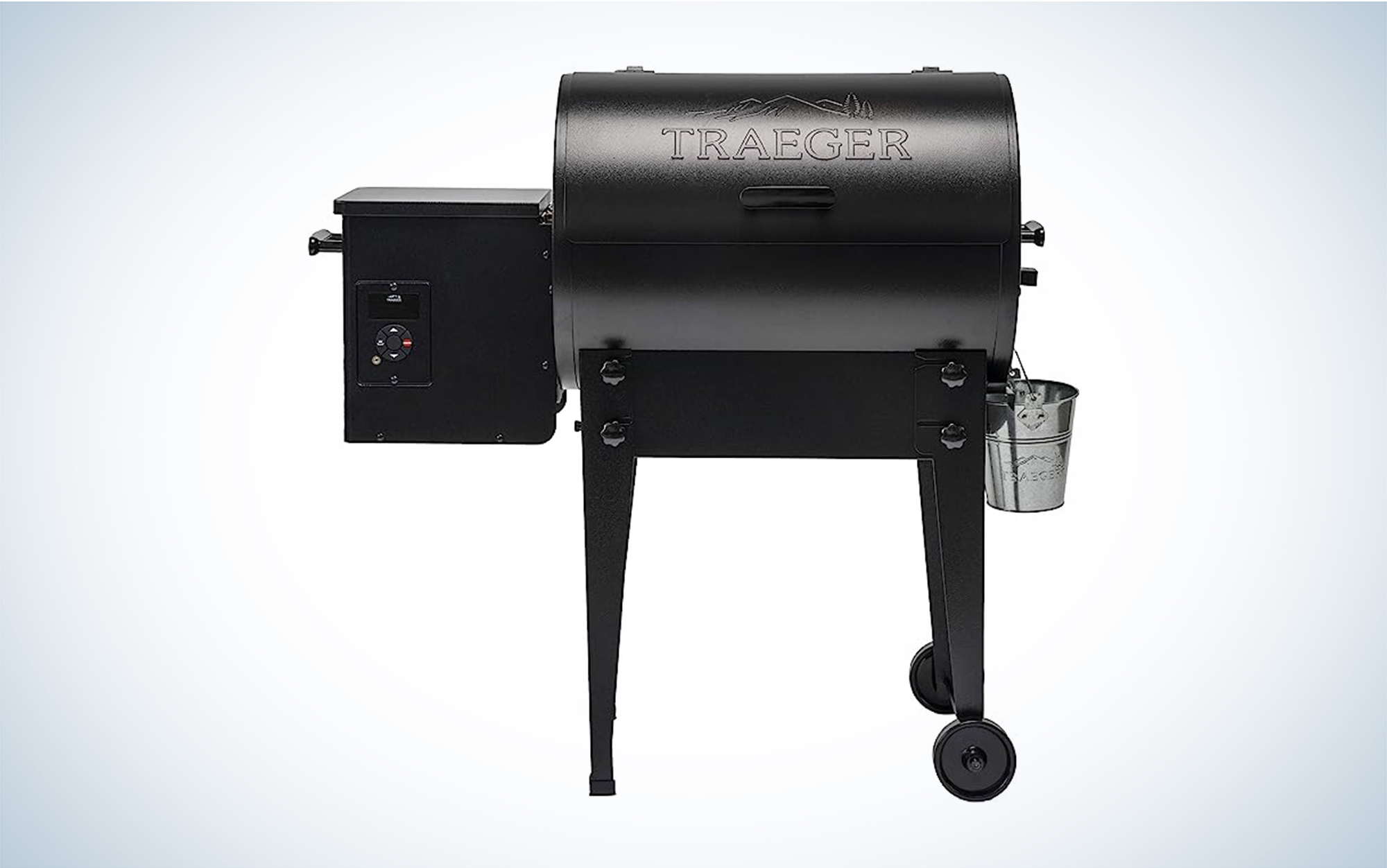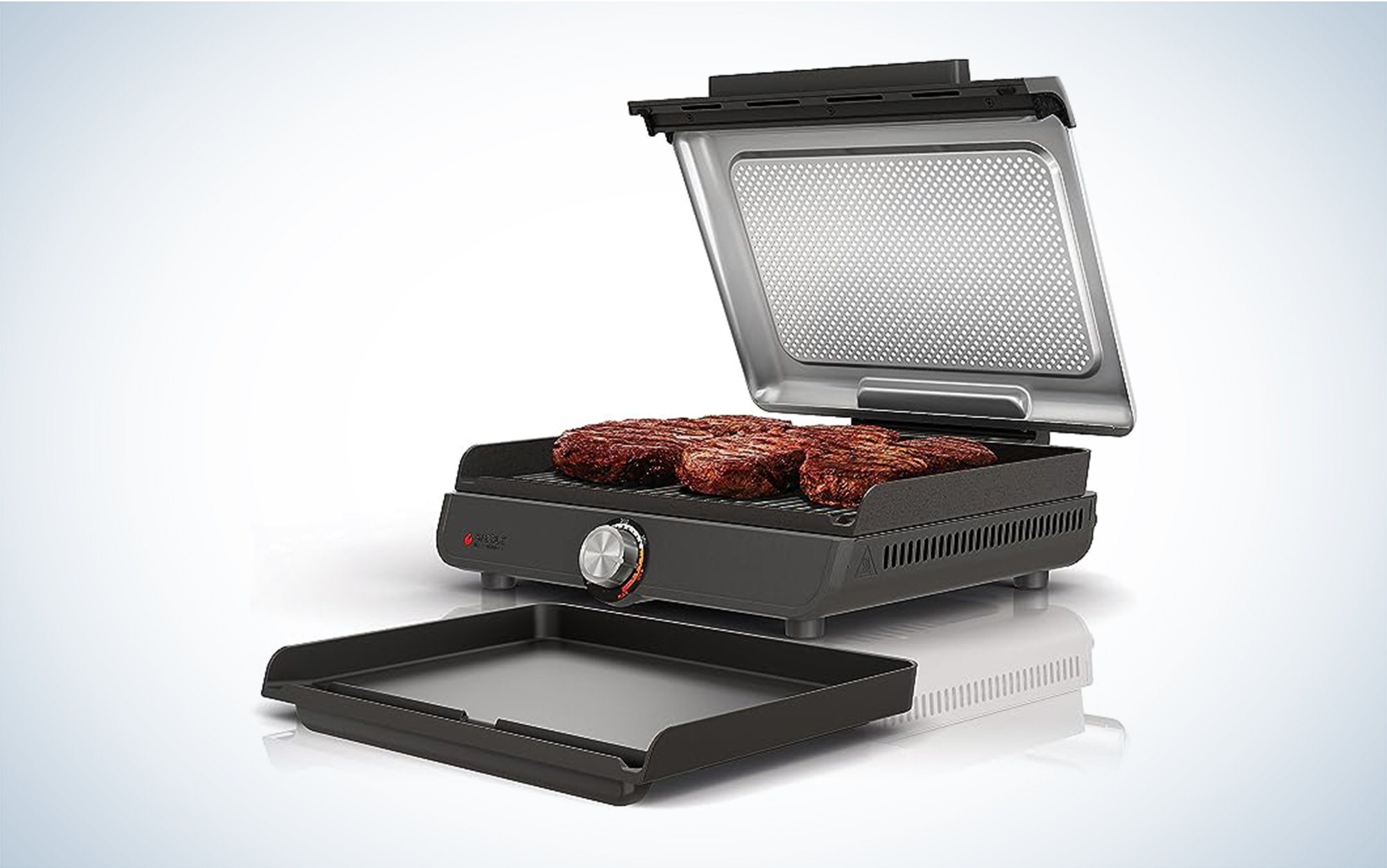The Best Grills, Chosen By Our Editors
Best Propane

Weber Spirit E-310
Best Charcoal

Big Green Egg
Best Pellet

Camp Chef Woodwind Pro 24
There is something primal and honest about cooking meat over an open flame. As the editors and writers of Outdoor Life we know this well. We hunt, fish, and grill wild game from all over the globe. On occasion, we have even grilled vegetables. We also know that the best grill for the job depends on circumstance. Most of us don’t need a fancy and expensive grill just to turn a steak medium-rare.
With that in mind, the OL crew picked our favorite grills that have proven themselves over the years without breaking the bank. Each is ideal for specific grilling desires.
- Best Propane: Weber Spirit E-310
- Best Charcoal: Big Green Egg
- Best Pellet: Camp Chef Woodwind Pro 24
- Best Portable: Traeger Tailgater
- Best for Indoors: Ninja Sizzle
How We Chose the Best Grills
Let’s get this part out of the way first: We are not professional chefs or grillmasters. We’re just serious outdoorsmen who love to grill the game we catch and kill. So, for the most part, we’ve selected simple, affordable, and practical grills for our roundup.
We’ve used all of these grills at home, at camps, and in the field. Most have proven themselves over a couple years of service. Since there are a wide variety of grill styles available, we made sure to select one top pick for every style.
Best Grills: Reviews & Recommendations
Best Propane: Weber Spirit E-315
Key Features
- Three stainless steel burners
- Total Cooking Area: 529 square inches
- Enclosed tank storage
- Two stainless steel work surfaces
- 36,000 BTU-per-hour input
- Price: $620
Pros
- Relatively affordable
- Ideal size for most grillers
Cons
- A little too small for big-time barbecues
The best grill is the one that you use all the time. For me, grilling season is 365 days a year, frigid Minnesota winters be damned. So I want a simple, functional grill that can heat up quickly and get the job done with minimal maintenance or effort on my part. For everyday use you can’t beat the simple and functional Weber Spirit series.
I went with the E-315 version, which comes in at a mid-level price point and also offers mid-level features. But that’s all I want or need. With three burners, I can get the grill scorching hot—beyond 500 degrees in a matter of minutes—but most of the time I just run two burners at medium-low heat which brings the grill to about 375 degrees consistently. I don’t need any advanced temperature control to finish brats and burgers or bring my steaks to medium rare. However there are other options in the Spirit line with additional burners and bigger (or smaller) cooking spaces.
Over the years I’ve noticed that on many other gas grills the electric starters are finicky and prone to fail. But that’s not the case with the Weber’s electric start system, which has worked flawlessly, even in windy and wet conditions.
The grill has a small warming rack, two porcelain-enameled cooking racks and porcelain-enameled flavorizer bars. There’s no bells or whistles or bluetooth, which is just how I want it. It also fits nicely on my deck without taking up too much space. —Alex Robinson
Best Charcoal: XLarge Big Green Egg
Key Features
- 24-inch diameter grill
- Total Cooking Area: 452 square inches
- 3-inch temperature gauge that goes to 750 degrees
- Spring-loaded easy-to-lift lid
- Insulated vent cap
- Weight: 219 pounds
- Price: $1,500
Pros
- Can deliver an intense sear or cook low and slow
- Produces excellent smoke, which can also be controlled
- Is less likely to dry out meat than other systems
Cons
- Heavy
- Has a learning curve
The first steak I had cooked for me on a Big Green Egg was a revelation. This took place down in Texas, where barbeque and grilling is practiced like a religion. (And where BGEs are as common as lifted pick-up trucks.) The intense sear on that thick T-bone, combined with the smoke from the grill’s mesquite charcoal, and the sealed in juices was a transformative experience. I knew I needed to get one.
The Big Green Egg comes in seven different sizes, from the itty-bitty mini with its 10-inch diameter grill to the 2XL, which has a grill that measures 29-inches across. I opted for the XLarge, and it’s 24-inch grill (or grid, as BGE refers to it).
The BGE is at its best when using high-quality lump charcoal. To get the grill going you add charcoal to the fill line on the interior. (Though you can get away with using less if you’re not grilling something complicated.) You open the vent at the bottom of the grill and keep the lid lifted while the charcoal ignites. Give yourself about 15 to 20 minutes for the BGE to get to cooking heat.
The magic of the BGE is the interior volume of the unit, the way it is insulated, and the manner in which you control the airflow with the lower and upper vents. By playing with the vents you can adjust the internal temperature and the amount of smoke. But learning to do so effectively is a trial-and-error process. There’s no one size-fits-all way to operate the grill. It takes practice to master the technique.
The easiest way to get your feet wet is to grill some chicken. This will also quickly showcase the BGE’s charms. After getting the charcoal going, open the bottom vent a couple inches, and crack the top a touch and start grilling. First of all, you can’t mess this up. And, secondly, you’ll be surprised at how much juice the chicken retains, even the breast meat.
BGE claims that the intense heat and volume of smoke are what seal in the juices. I don’t know if that’s accurate, but I can attest to the fact that this grill doesn’t seem to dry out meat like a traditional grill. This is particularly true for cooking game birds.
While the BGE is great for cooking at high heat, it also can BBQ meat in an expert fashion. However, the grill does take more tending than other units to correctly maintain its temperature over a long period of time. So if you’re used to a system like a pellet grill where you can set the temperature and walk away, you’re going to find the BGE much more labor-intensive.
But if you take your grilling seriously, like cooking with natural charcoal, and don’t mind putting in the extra effort, the BGE is a fabulous option. —John B. Snow
Best Pellet: Camp Chef Woodwind Pro 24
Key Features
- Stainless steel construction
- Fan-only mode for cold smoking
- Four temperature probes
- Wi-Fi controller and Camp Chef Connect
- Adjustable smoke control
- Total Cooking Area: 811 square inches
- Price: $1,200
Pros
- Great monitoring, can use four temperature probes simultaneously
- User friendly, wireless control via Camp Chef Connect app
- Can cook or smoke with pellets, wood chips, or charcoal using the smoke box
- Easier cleaning than older models
- Compatible with a wide variety of accessories
Cons
- No direct flame cooking that older Woodwind models had
Some folks like to beat their chest about using a classic charcoal grill, but once I switched to a pellet grill, there was no going back. I started out with an earlier Woodwind model and used it for years before upgrading to the Woodwind Pro 24. This grill has the basic features and function that you’ll expect from any pellet grill or smoker. It has a storage hopper that feeds pellets into a burner pot via an electric-powered auger. Temperature and smoke level are regulated by a digital control panel, or you can do it on your phone via the Camp Chef Connect app. Additionally, this grill features a separate smoke box, which you can supplement your cooking and smoking with wood chips or charcoal. With the fan-only mode, you can even cold smoke in this grill.
I’ve used this pellet grill to cook everything from steak to pizza to cookies, and it all turns out excellent. It has a 24-inch grilling grate surface, but includes a removable upper rack too. You can fit a surprising amount of food in this grill. I can smoke 30 pounds of summer sausage at one time. The biggest advantage for the average recreational smoker or weekend grill master is the precise and simple temperature control. The grill comes with four different temperature probes that can be used simultaneously. These temperature probes do quit working after extended use, but that’s a cost of doing business. I wish this grill had a direct flame option like the older Woodwinds, but to be fair, this one is much easier to clean and the drip tray doesn’t get nearly as much corrosion. —Tyler Freel
Read Next: Best Pellet Grills
Best Portable: Traeger Tailgater 20
Key Features
- Total Cooking Space: 300 square inches, or two whole chickens
- Weight: 62 pounds
- Pellet Hopper Capacity: 8 pounds
- Max Temperature: 450 degrees
- Min Temperature: Approximately 180 degrees
- Keep warm mode
- Meat probe included
- Digital arc controller
- Porcelain-coated grill grates
- Price: $530
Pros
- Lightweight and easy to maneuver
- Easy to use, plug it in and turn it on
- Durable and quality build
Cons
- Temperature and pellet hopper need to be monitored
- Requires thorough cleaning after each use
I’ve had my Traeger Tailgater 20 liter since I graduated college six years ago. It’s weathered four moves, crossed state lines with me five times, and even endured a trip to South Dakota where I used it to smoke more than 100 pounds of bacon in five days. I’m happy to say that it’s held up admirably.
I’ve smoked more than 1,000 pounds of meat on this little grill in the past six years, and have used surprisingly few pellets to do so. (I use about 1 pound of pellets per hour at lower temperatures—my optimal smoking temp.)
The downsides of the Tailgater are to be expected with this type of smoker. You cannot set it and forget it like the higher-end Traegers since the temperature and pellet hopper need to be monitored, as the temperature tends to fluctuate. You must also clean the ash out of the burner regularly to avoid fires. I’ve caught mine on fire three times by neglecting this. Six to seven hours of smoking without cleaning led the ash to catch; then the grease and drippings helped fuel the fire. Thankfully, I was able to just turn off the grill and the fire settled down.
Read Next: Best Traeger Grills
Since I bought my Tailgater, Traeger has upgraded it with a keep warm mode and an included meat probe. Overall the Traeger Tailgater 20 is lightweight, easy to maneuver, delivers plenty of bang for your buck, and doesn’t take up much space in the bed of my truck. —Derek Horner
Best for Indoors: Ninja Sizzle
Key Features
- 14-inches of grill surface
- 500-degree max temp
- Lid can be moved up and down
- Interchangeable grill and griddle plates
Pros
- Multifunctional grill/griddle
- Grease catch for easy cleaning
- Non-stick coating
- Dishwasher safe
Cons
- The 30-inch power cord might require an extension cord to be used for some people
This might sound like hersey, but not all grilling takes place outside over an open flame. Sometimes you might want to grill inside, and for that you need a smokeless grill. You won’t find a better option than the Ninja Sizzle. This electric grill produces grill marks on your steaks, burgers, and portabella mushrooms and you can cook eggs and pancakes for the whole family with the griddle plate. You’re not going to get the smoky flavor of a charcoal grill, but you’ll get the tasty Maillard reaction thanks to the high heat the Sizzle puts out. The whole surface is a consistent temperature for maximum use of the space, so you don’t have a blazing hot center that becomes cooler toward the ends.
I love that the lid can be removed and put in the dishwasher. The plates are also easy to clean because they’re non-stick. One thing to keep in mind is that to preserve the non-stick coating, it’s best to avoid metal cookware. —Scott Einsmann
Final Thoughts on the Best Grills
Today’s modern grills, just like almost every other home appliance category, have gotten a bit over complicated. If you just need a workaday grill to cook up delicious meals for you and the family, go with the Weber Spirit. If you’re more of a grill master and want that charcoal grill flavor, then throw down for the Big Green Egg. Go with the Camp Chef if you’re straddling the fence between versatility and practicality. Just remember, grilling is supposed to be a simple and fun cooking technique. So keep your grill shopping simple, too.
- Best Propane: Weber Spirit E-310
- Best Charcoal: Big Green Egg
- Best Pellet: Camp Chef Woodwind Pro 24
- Best Portable: Traeger Tailgater
- Best for Indoors: Ninja Sizzle
The post The Best Grills, Chosen By Our Editors appeared first on Outdoor Life.
We may earn revenue from the products available on this page and participate in affiliate programs. Learn More ›





